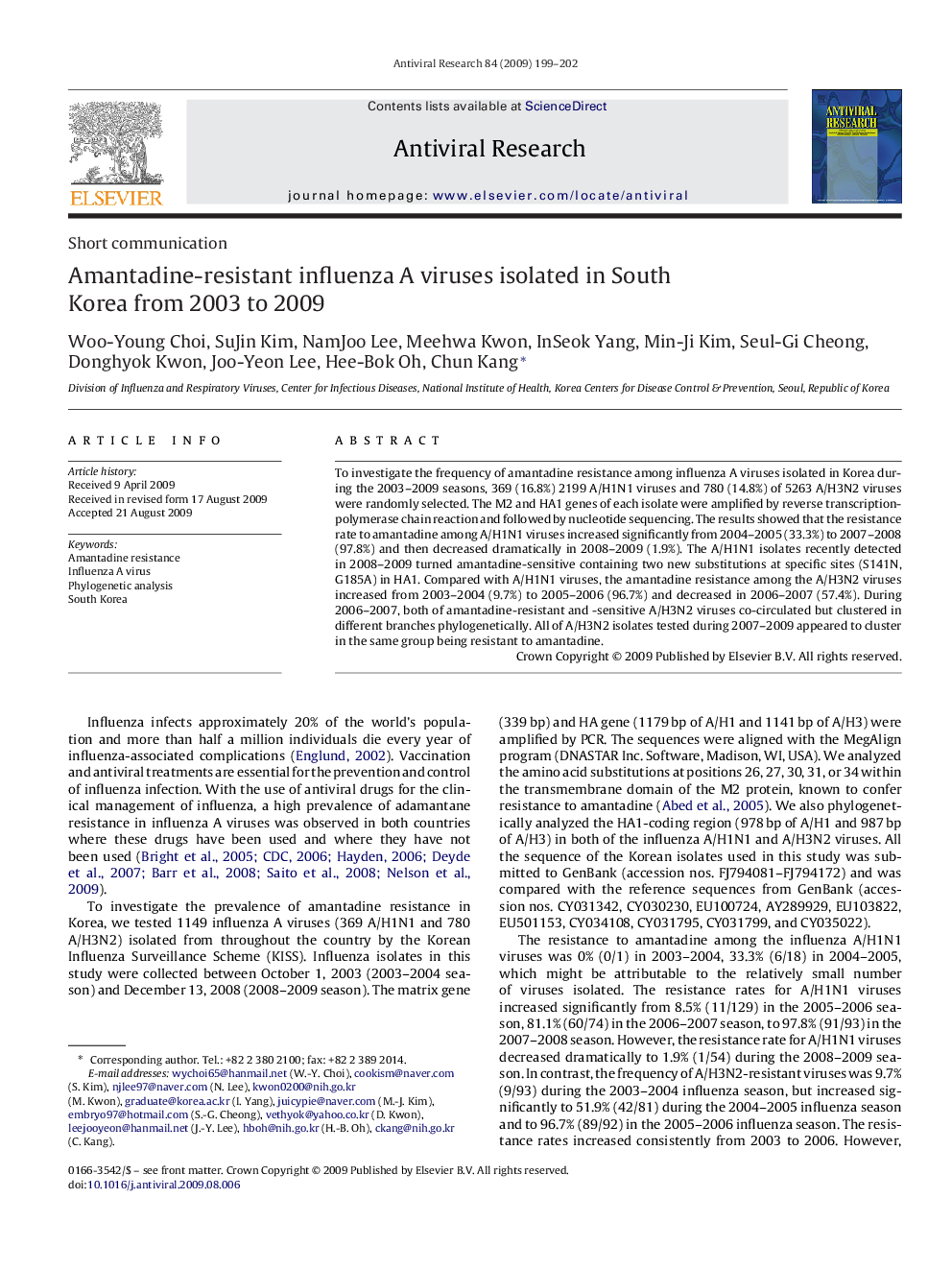| Article ID | Journal | Published Year | Pages | File Type |
|---|---|---|---|---|
| 5823038 | Antiviral Research | 2009 | 4 Pages |
Abstract
To investigate the frequency of amantadine resistance among influenza A viruses isolated in Korea during the 2003-2009 seasons, 369 (16.8%) 2199 A/H1N1 viruses and 780 (14.8%) of 5263 A/H3N2 viruses were randomly selected. The M2 and HA1 genes of each isolate were amplified by reverse transcription-polymerase chain reaction and followed by nucleotide sequencing. The results showed that the resistance rate to amantadine among A/H1N1 viruses increased significantly from 2004-2005 (33.3%) to 2007-2008 (97.8%) and then decreased dramatically in 2008-2009 (1.9%). The A/H1N1 isolates recently detected in 2008-2009 turned amantadine-sensitive containing two new substitutions at specific sites (S141N, G185A) in HA1. Compared with A/H1N1 viruses, the amantadine resistance among the A/H3N2 viruses increased from 2003-2004 (9.7%) to 2005-2006 (96.7%) and decreased in 2006-2007 (57.4%). During 2006-2007, both of amantadine-resistant and -sensitive A/H3N2 viruses co-circulated but clustered in different branches phylogenetically. All of A/H3N2 isolates tested during 2007-2009 appeared to cluster in the same group being resistant to amantadine.
Related Topics
Life Sciences
Immunology and Microbiology
Virology
Authors
Woo-Young Choi, SuJin Kim, NamJoo Lee, Meehwa Kwon, InSeok Yang, Min-Ji Kim, Seul-Gi Cheong, Donghyok Kwon, Joo-Yeon Lee, Hee-Bok Oh, Chun Kang,
